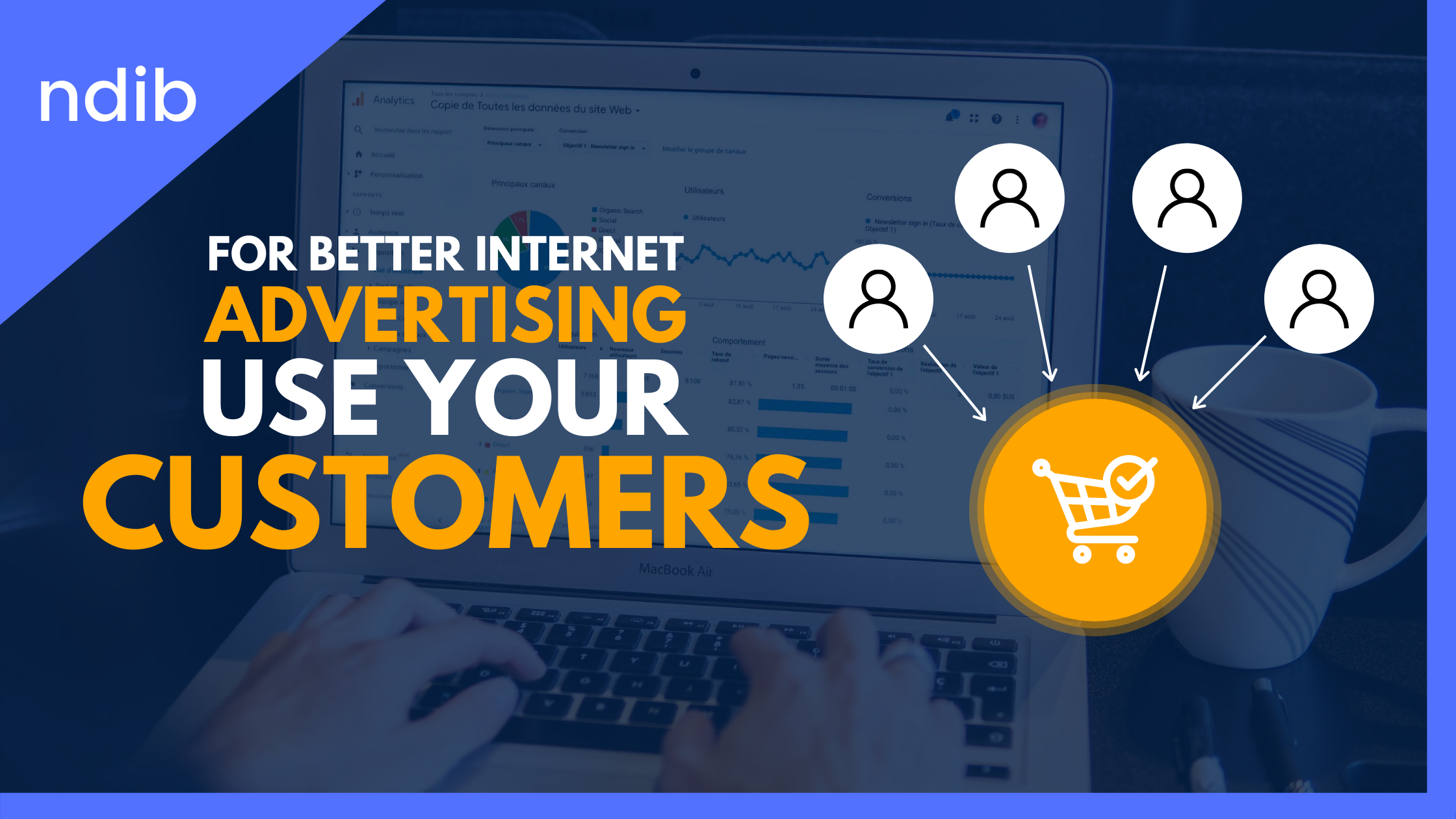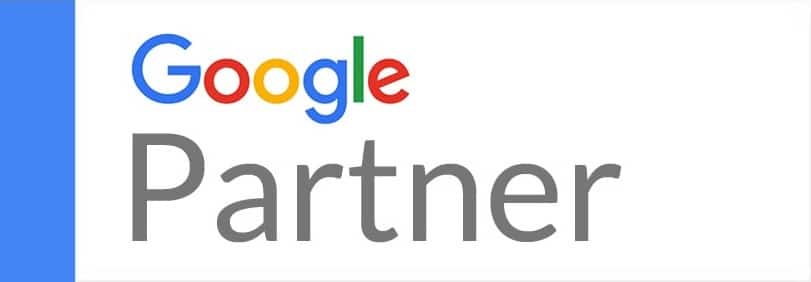You feel like you are on a bad blind date when potential customers visit your website.
You are not connecting with them.
Yet, for your business, the results are worse than any blind date.
Lack of connections on a blind date ends with awkward hugs outside the restaurant.
Lack of connection with potential customers ends with you going out of business.
This is a real problem.
The dynamic is that of an out of touch parent inviting their teenager to throw on a pair of Reebok Pumps and go get Jiggy down at the local arcade.

This isn’t how it is supposed to be.
What happened?
Your Marketing Message Doesn’t Connect With Potential Customers

Oftentimes, businesses forget that they are not their target customers.
These businesses design their Internet Advertising campaigns as if they were targeting themselves.
They are not.
This means that the marketing messages they write for the copy are wrong.
These marketing messages may resonate with the business that created them.
They do not resonate with potential customers.
Worse than not resonating, the potential customer may not even understand what these businesses are trying to convey.
You And Your Team Wrote The Marketing Message (And It Shows)
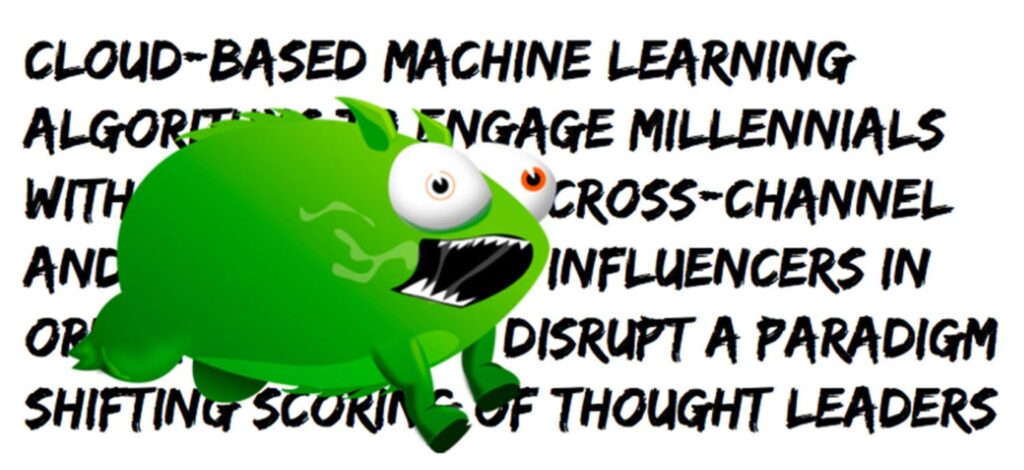
But one thing is for sure – your customer didn’t think of your marketing.
The difference between:
- the language you use to describe your business,
- the language your customer uses to describe your business,
- and what you think the customer cares about vs. what the customer actually cares about
causes a disconnect between your business and your potential customers.
This disconnect means that your business is out of touch with your potential customers.
When potential customers read your marketing messages, you are seen as an “outsider” who doesn’t understand their wants and needs….and even if you do find their needs, you phrase it in a weird and alien way.
You are positioned as the opposition that needs to be defended against.
For example, imagine you run a SaaS business that allows users to connect with other users.
Once one user is connected to another, they can send messages to each other.
That simple.
Yet, when you went to create your marketing message, you focused on yourself.
You wrote about what you thought was important.
You completely forget about your target audience.
If that happened, you might end up with this travesty of a marketing headline:
“Attention sophisticated marketers and early adopters: Be among the first to try self-service Sponsored InMail.”
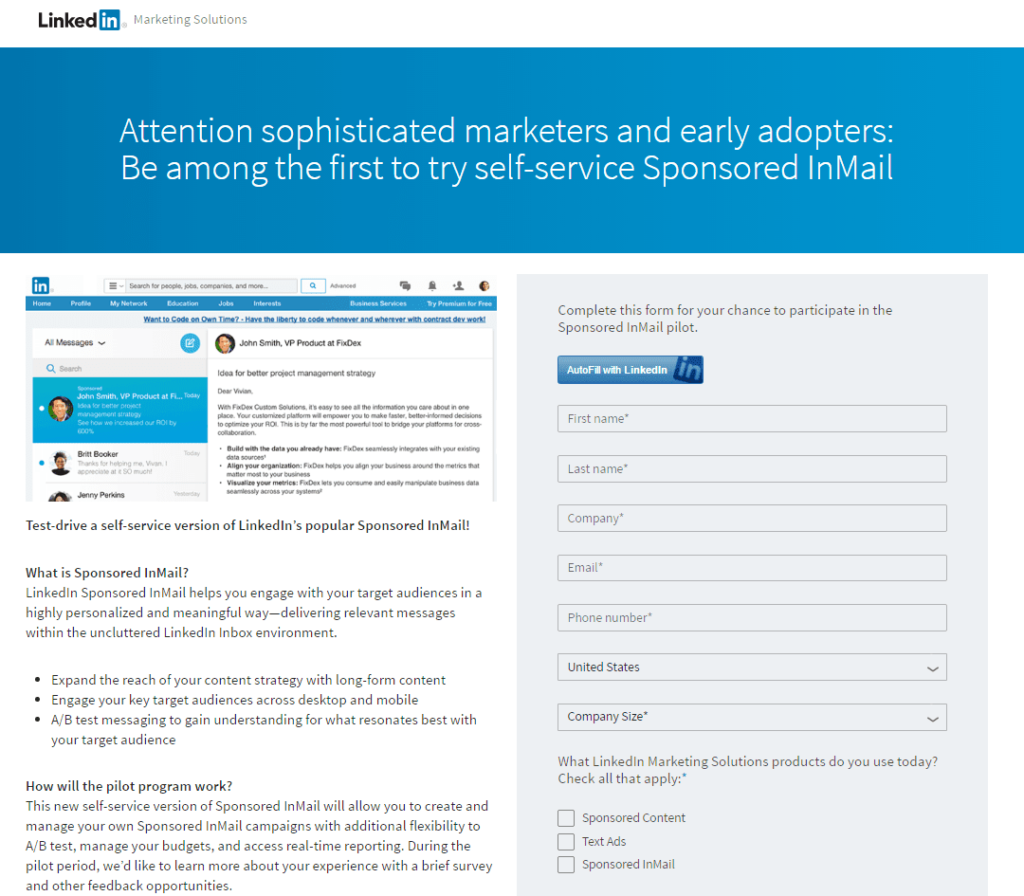
Do you think that the average business person would ever in a million years use those words?
Do you think that they even understand those words?
For the sake of argument, let’s pretend customers do understand that message.
Is that value proposition something they would get excited about?
Are people converting on this landing page?
The answer to those questions is an emphatic “no.”
As in no one knows what they are talking about.

The Solution: Use Your Customers To Write Your Marketing Message
You want your marketing message to resonate with potential customers? They need to see themselves when they read the marketing message.
You want to match what is going on in their head.
You want your potential customers to feel it.
To break this apart into a concrete framework, your marketing message needs to:
- Describe the specific positive outcomes that a potential customer wants from using your product or service. These descriptions need to be communicated naturally. These descriptions need to highlight the features and benefits that customers care about. This needs to be done in language they use and understand.
- Describe the specific negative outcomes that customers want to avoid by using your product or service. These descriptions need to be communicated naturally. These descriptions need to highlight what customers care about in the language they use and understand.
The best way I have found to accomplish this is to take what your customers say is important and repeat it back to them in their own words.
That simple.
Use the same words and phrases that they use.
When they tell you they want to avoid something, let them know in your marketing message they will avoid that outcome.
If they tell you they want to get or achieve something from your service, let them know that they can achieve those outcomes.
How To Use Your Customers To Create Your Marketing Message
The following is a step by step methodology to find out what your customers care about, how they describe it, and then use it in your marketing messages to them effectively.
Step 1: Unearth
The first step is a reverse brainstorm.
Here is the difference between reverse and traditional brainstorm: in a traditional brainstorm, you take the ideas coming out of your head, and you put them on paper.
In a reverse brainstorm, you receive all the ideas from your prospect’s head and capture them.
You want to find customers (or potential customers) talking about your solution and capture it.
Your goal in this step is to find out:
1. What your customers say or are talking about and
2. How they say it
Step 1.1 - Set Up Your Google Research Sheet
Take out a Google Sheet (my favorite tool) and create two tabs:
1. Positives TAB. In this tab, you learn about positive experiences and uncover how potential customers describe these positive experiences. What specifically do customers want to get from your service (benefits)? It is typically not what you think. As the old marketing adage goes – people don’t want a drill…they want a hole in the wall.

2. Negatives tab. In this tab, you will find what negative experiences customers have had. You also discover how they describe these negative experiences.
Step 1.2 - Find Your Potential Customers
In this step, you will want to find the places where your potential clients are having conversations (or monologues) about your business or service or similar businesses or services. Some of the places worth checking include:
- Yelp
- Your blogs comments
- Actual conversations with your customers (yes, you may have to do the unthinkable and speak with a human)
- Chats on your site
- Emails (if you have an email list with good volume)
- Professional review sites (as an example AVVO for lawyers)
- Competitors testimonials
- Competitors Yelp
- Quora
- Google reviews
- Competitors websites
- Google ads review extensions
- Facebook ads (in the comments)
Step 1.3 - Reverse Brainstorm
In this step, you will go to all the places where your customers are, and when you come across comments that customers use, put them into your Google Sheet.
Since you have two tabs (positive and negative), you will want to put them into the appropriate tab.
Don’t worry about perfection at this point. It is just if something resonates with you, or you see it over and over again, then capture it on your spreadsheet.
Here are some of the types of things you are looking for with real-world examples to make this more concrete and actionable.
1.3.A - Positives
A. Benefits
What are the specific benefits a potential customer could get from your product or service?
As an example of a marketing message that talks about the benefits of the service rather than the service itself, check this customer review from UnBounce:
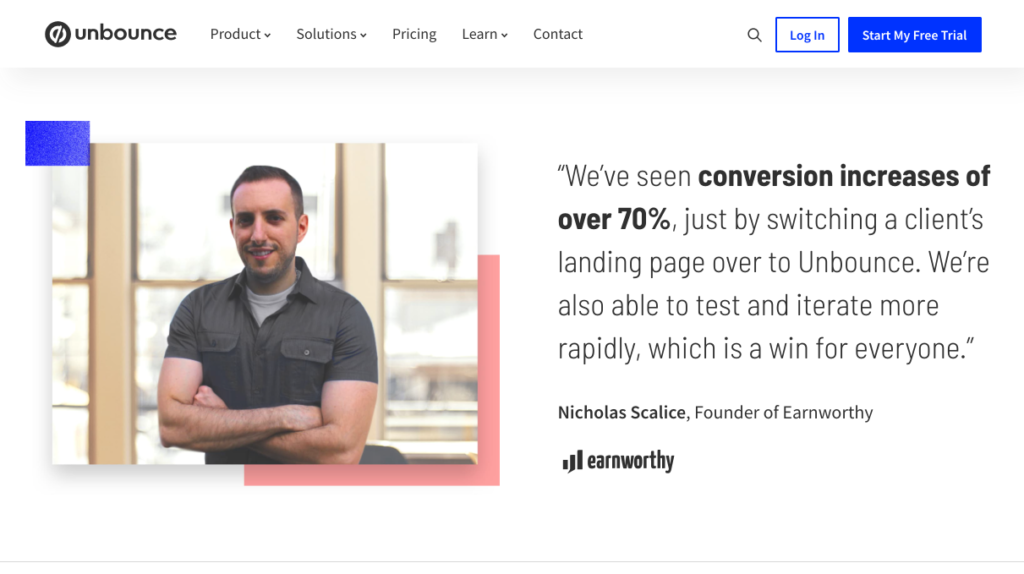
You can see that their customer talked about the benefits of testing and iterate rapidly rather than the features like the ability to use dynamic keyword insertions.
You would capture the part about the ability “to test and iterate rapidly” in your google research sheet.
B. Positive Experiences:
What kinds of positive experiences customers had with yours or other businesses like yours?
For example, AlphaGraphics has a Google review from a customer that discusses the positive experience of the great phone support.
If this were related to your industry, it would be important to capture that and put it on your Google research sheet.

URL: https://www.podium.com/article/examples-good-reviews/
C. Positive Stories and Examples
What are some stories and examples of positive experiences that customers had from your product or service?
For example, check out this customer review from Amy about a landscape company – she discusses positivity, friendliness, and creativity – not what you would typically expect from landscapers. However, it is what your potential customer cares about.

URL: https://www.business2community.com/
There is quite a bit to capture from a good customer story, and oftentimes I will paste the whole story into my google research sheet.
1.3.B - Negatives
A. What to avoid
What is it that your service solves or helps them avoid?
As an example, when I watched the videos of customer testimonials from the AZ Flat Fee site.
One thing that came up repeatedly is that customers wanted to avoid messy contracts where realtors get a huge percentage.
You can safely say this actually bothers potential customers and add it to your google research sheet.
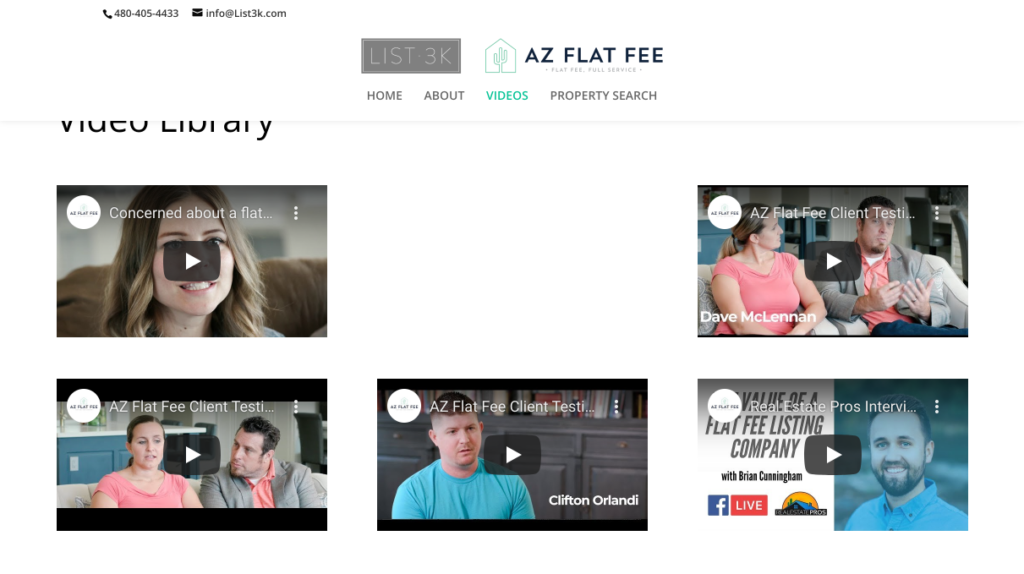
B. Symptoms
What are the symptoms of the problem that lead them to seek your solution?
For example, John M. was having TMJ pain, which forced him to look for a different anti-snoring device.
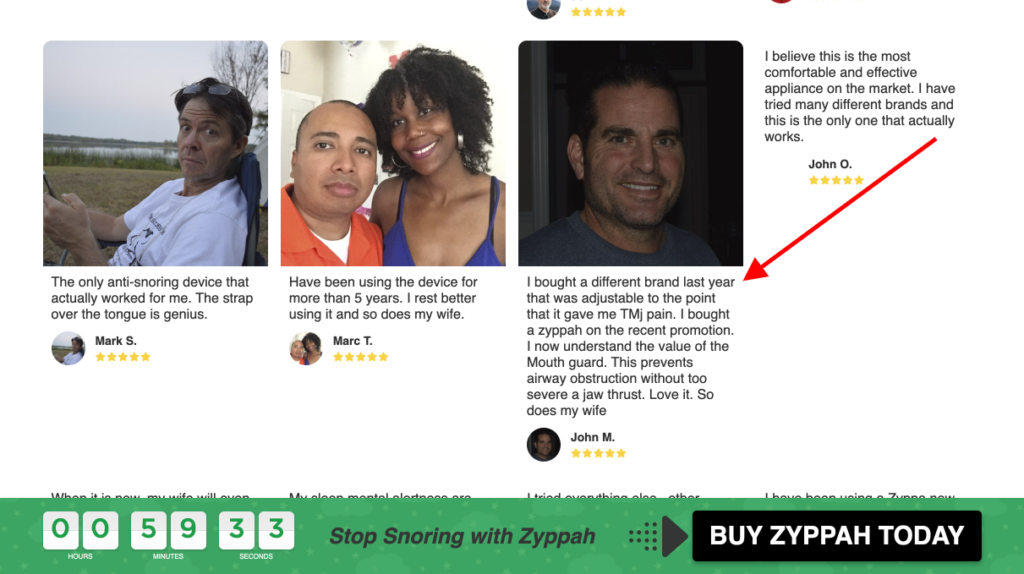
This is important for your marketing messages because if you can meet the customer where they are and demonstrate that you understand their pain, you have a much better chance of connecting (and eventually selling) to them.
C. Negative Experiences
What specific negative experiences have customers had in the past when they are attempting to solve this problem.
For example, in yelp reviews of restaurants, it is often the service or wait time, which is negative rather than even the food.
Below is a great example where a customer got an estimate for a roof repair even though he hadn’t even provided his information to the roof doctor (this is actually an essential marketing tip – don’t give solutions without first asking what the problem is)

URL : https://socialmediaweek.org/
D. Negative Stories and examples.
What are some stories and examples of negative experiences that customers have had from your product or service?
Below is a review of the thickness of the lotion being a negative example.

URL: https://www.amazon.com/Palmers-Butter-Formula-Firming-Lotion/
If you ran a lotion business, besides making sure that it goes in the basket so it doesn’t get the hose again, you would want to put in your marketing copy that you don’t have thick oily lotion.
Step 2: Audit
Once you open up the nozzle of customer feedback, you will be blasted with a torrent of information, and not all of it is created equal.
In fact (especially if you are looking at Yelp), some reviews won’t even be real.
You need to sort through your google sheet and find the topics, words, phrases, and concepts that keep coming up repeatedly.
These may be compliments; they may be complaints; they may even be features that customers wish your business offered.
As you filter, you find the best ones resonate and come to the top naturally.
These are the vital few.

There is a little bit of intuition here, but you have put in the research, so you have earned the right to use the best judgment.
These vital few are the pieces of information that customers actually care about described in the language your customers naturally use.
Step 3: Create & Test
The final step is to put those words, phrases, and concepts into your marketing messages.
For example, let’s pretend you are marketing for a wedding photographer.
You researched and audited.
What you found is the bad customer feedback revolved around the photographer making customers feel uncomfortable, as in the example of a customer review below:

URL: https://www.weddingwire.com/wedding-forums/
You would then use this information to promote how friendly and personable in your marketing message. You know this is important because a real-world customer has commented on it.
Another great option would be to include youtube ads so they can get a sense of your personality.
You would also know to stay away from information that you perceive as valuable, but the customer doesn’t.
As an example that you use high-tech photo equipment.
Match the language of the customer with the copy in your ads and landing pages.
Try out different marketing messages you uncovered and be sure to track the form fills and the calls you receive.
Test this new copy against the original.
Choose the winner and re-test your messaging.
That’s how you create Internet Advertising that speaks to the customer.
Tying It Up
Follow this advice to create a marketing message that resonates with potential customers.
Speak to them about features and benefits they care about, in a language that they understand (because it is their language).
Doing this will increase your ability to connect with and sell to prospects.

